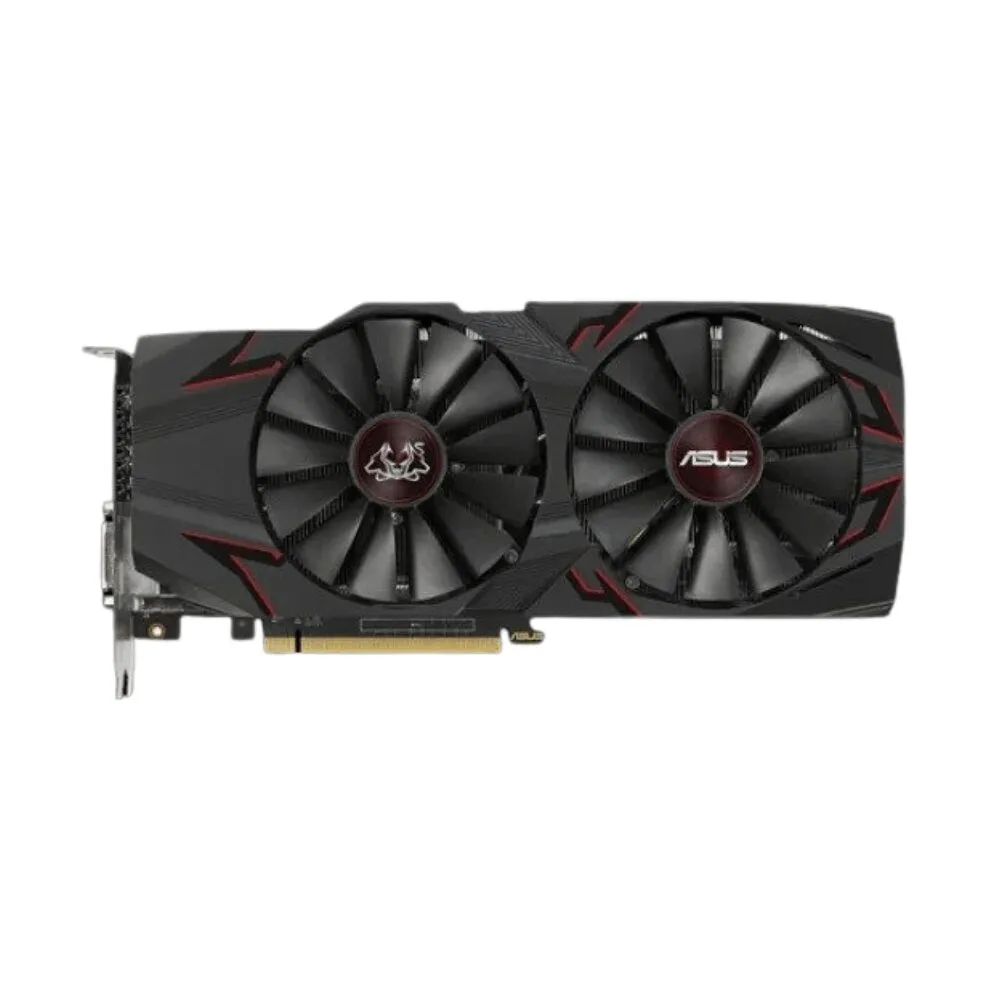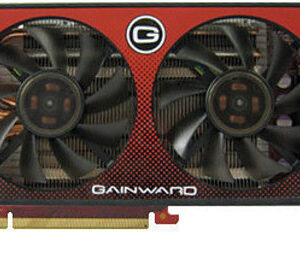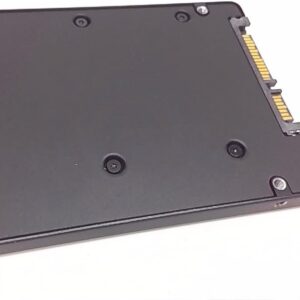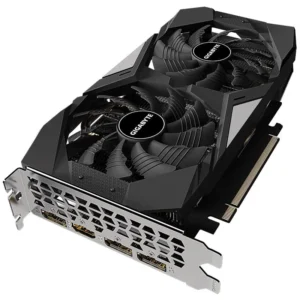NVIDIA GTX 1070TI 8GB DDR5 256BiT
NVIDIA GTX 1070TI 8GB DDR5 256BiT
₨50,000.00
- DA Cores 2432
- Core Speed 1607 MHz
- Boost Clock 1683 MHZ
- Memory Clock 8 GBPS
- Memory Amount 8GB GDDR5
- Memory Interface 256-BIT
- Memory Bandwidth 256 GBPs
Based on NVIDIA’s Pascal architecture, the MSI GeForce GTX 1070 Ti GAMING 8G Graphics Card provides major improvements in performance, memory bandwidth, and power efficiency over its predecessor, the high-performance Maxwell architecture. It also introduces innovative graphics features and technologies that redefine the computer as the platform for playing AAA games and taking full advantage of virtual reality via NVIDIA VRWorks.
The front panel of the card features a variety of outputs. There are three DisplayPort 1.4 outputs in addition to an HDMI 2.0b output and a DVI-D Dual-Link output. The GTX 1070 Ti is not just about high-resolution gaming. Computationally intensive programs can utilize the GPU’s 2432 cores to accelerate tasks using CUDA or other APIs.
To keep cool, even when overclocked, MSI implemented their Twin Frozr VI cooler on this card. The Twin Frozr VI cooler uses two large fans to force air through the heatsink and dissipate heat and lower the GPU’s internal temperature. Because this kind of cooler recirculates air back into the case, this card works best in cases that have unrestricted airflow.
VRWorks Graphics includes a simultaneous multi-projection capability that renders natively to the unique dimensions of VR displays instead of traditional 2D monitors. It also renders geometry for the left and right eyes simultaneously in a single pass.
VRWorks Audio uses the NVIDIA OptiX ray-tracing engine to trace the path of sounds across an environment in real-time, fully reflecting the size, shape, and material of the virtual world.
NVIDIA PhysX for VR detects when a hand controller interacts with a virtual object, and enables the game engine to provide a physically accurate visual and haptic response. It also models the physical behavior of the virtual world around the user so that all interactions — whether an explosion or a hand splashing through water — behave as if in the real world.
With a compatible motherboard and a connecting bracket, two or more NVIDIA GPUs of the same model can combine processing power using NVIDIA’s Scalable Link Interface (SLI). How the cards work together can be customized to suit your preferences. Alternate frame rendering has each alternating card prepare the next frame, essentially multiplying the capabilities of a single card’s maximum capable frame rate output. Each card in the configuration can also be used to improve anti-aliasing by being able to process an image in parallel with the other cards before filtering out jagged edges.
NVIDIA’s SLI HB bridge doubles the available transfer bandwidth compared to the NVIDIA Maxwell architecture. Delivering smooth gameplay, it’s an effective way to enjoy surround gaming and it’s only compatible with the GeForce GTX 1080 and 1070 graphics cards.
Note: The benefits of SLI will vary based on component configuration.
Free Shipping
Orders Over $500
Safety Insurance
For every purchased
Description
Based on NVIDIA’s Pascal architecture, the MSI GeForce GTX 1070 Ti GAMING 8G Graphics Card provides major improvements in performance, memory bandwidth, and power efficiency over its predecessor, the high-performance Maxwell architecture. It also introduces innovative graphics features and technologies that redefine the computer as the platform for playing AAA games and taking full advantage of virtual reality via NVIDIA VRWorks.
The front panel of the card features a variety of outputs. There are three DisplayPort 1.4 outputs in addition to an HDMI 2.0b output and a DVI-D Dual-Link output. The GTX 1070 Ti is not just about high-resolution gaming. Computationally intensive programs can utilize the GPU’s 2432 cores to accelerate tasks using CUDA or other APIs.
To keep cool, even when overclocked, MSI implemented their Twin Frozr VI cooler on this card. The Twin Frozr VI cooler uses two large fans to force air through the heatsink and dissipate heat and lower the GPU’s internal temperature. Because this kind of cooler recirculates air back into the case, this card works best in cases that have unrestricted airflow.
VRWorks Graphics includes a simultaneous multi-projection capability that renders natively to the unique dimensions of VR displays instead of traditional 2D monitors. It also renders geometry for the left and right eyes simultaneously in a single pass.
VRWorks Audio uses the NVIDIA OptiX ray-tracing engine to trace the path of sounds across an environment in real-time, fully reflecting the size, shape, and material of the virtual world.
NVIDIA PhysX for VR detects when a hand controller interacts with a virtual object, and enables the game engine to provide a physically accurate visual and haptic response. It also models the physical behavior of the virtual world around the user so that all interactions — whether an explosion or a hand splashing through water — behave as if in the real world.
With a compatible motherboard and a connecting bracket, two or more NVIDIA GPUs of the same model can combine processing power using NVIDIA’s Scalable Link Interface (SLI). How the cards work together can be customized to suit your preferences. Alternate frame rendering has each alternating card prepare the next frame, essentially multiplying the capabilities of a single card’s maximum capable frame rate output. Each card in the configuration can also be used to improve anti-aliasing by being able to process an image in parallel with the other cards before filtering out jagged edges.
NVIDIA’s SLI HB bridge doubles the available transfer bandwidth compared to the NVIDIA Maxwell architecture. Delivering smooth gameplay, it’s an effective way to enjoy surround gaming and it’s only compatible with the GeForce GTX 1080 and 1070 graphics cards.
Note: The benefits of SLI will vary based on component configuration.














Reviews
There are no reviews yet.